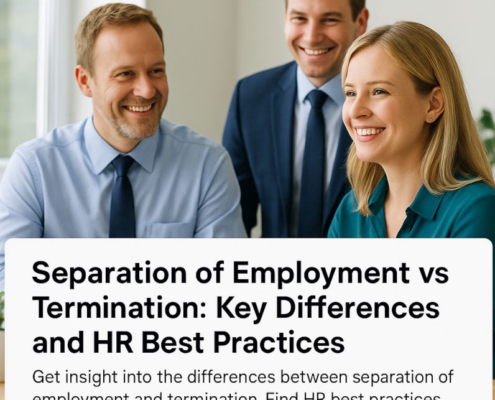Introduction
The California Supreme Court warns us of the legislature’s stringent standards for arbitration agreements in Ramirez vs Charter Communications, Inc. (2024), paying special attention to arbitration agreements in the context of employment. The court reaffirmed the significance of drafting reasonable contract provisions, with special attention to the practical implications of language in arbitration contracts at the point of contract creation, by ruling that the arbitration contract in question was unjust due to inequitable conditions.
To lower the likelihood of unenforceability because of possibly unconscionable terms for which separation will not be considered the appropriate solution, parties ought to carefully examine their arbitration provisions to make sure they correspond to the principles described in this article.
When people ask, “Are arbitration agreements enforceable in California?” they usually expect a yes-or-no answer. The answer is not straight.
The Case’s Factual Background
Nearly 100,000 people work for Charter Communications (Charter), a telecommunications corporation that provides services to clients across the United States. Charter employed Solution Channel, an alternate dispute resolution system. All candidate, current worker, and former worker conflicts about “employment-based legal challenges” were intended to be covered.
A candidate had to consent to use Solution Channel as a dispute resolution process before they were able to apply for a job with Charter. A Mutual Arbitration Agreement and the Solution Channel Guidelines were among the agreements and policies that applicants were required to read and electronically agree to after receiving a job offer.
Charter hired Angelica Ramirez in July 2019. She finished the onboarding procedure, which involved signing the Agreement & Guidelines electronically. After being fired in May 2020, she filed a lawsuit against Charter in the same year. Allegations of wrongful termination in contravention of public policy, as well as harassment, discrimination, and retribution pursuant to the Fair Employment and Housing Act, were alleged in her case.
Charter filed a motion to force arbitration and recoup legal fees according to the terms of the Agreement. Ramirez argued that the Agreement was both legally and procedurally unreasonable in his opposition to the motion. Charter contended that either the Agreement wasn’t unconscionable or that, rather than nullifying the entire Agreement, the objectionable elements ought to be removed.
Due to its requirement as an aspect of employment, the court of appeals determined that the Contract of Employment was an agreement of adhesion, which made it somewhat procedurally unconscionable. It concluded that the Agreement flouted FEHA by not restricting Charter’s recovery of legal costs in cases involving unfounded or bad faith allegations, reduced the time for submitting a claim, and unlawfully permitted an interim expense award to a side that effectively compelled arbitration, making it fundamentally unconscionable.
The trial judge dismissed objections that some claims were excluded and that the discovery restrictions were unconscionable. The Agreement was deemed unenforceable because it was found to be “infested with unconscionability.” Charter’s attempt to force arbitration was turned down. Based on an analogous analysis, the court upheld the lower court’s ruling that the agreement was unconscionable on review and determined that other clauses were also unconscionable. After that, the matter was sent to the California Supreme Court for consideration.
Anyone who has ever wondered, “Are arbitration agreements enforceable in California?” will find this case useful.
Arbitration Contracts in General
Valid agreements for arbitration are regarded as contracts under both federal & California law. A strong public policy endorsing arbitration as a prompt and reasonably priced means of resolving disputes is reflected in the Arbitration Act (California).
Unless there are circumstances that could lead to the termination of any contract, a written agreement to settle disputes through arbitration is regarded as legitimate, enforceable, and irreversible. Unconscionability is one of these grounds. If a contract satisfies both the procedural & substantive requirements of that defense, it is considered unconscionable. This is frequently the case when a single party did not have an adequate option when entering into the agreement (procedural) and the terms are unduly advantageous to the opposing party (substantive).
Unconscionability
Both procedural & substantive unconscionability must be proven by the party contesting a contract for arbitration. The method of negotiation is examined for technical unconscionability to see whether disparities in negotiating leverage resulted in “surprise” or “oppression.” This component is usually established if an arrangement is an agreement of adhesion, which is a standardized contract that one party in a superior negotiation position offers and that the other side can only reject or accept exactly as it is.
The equitable nature of the contract’s provisions and whether they produce unfair or biased results are examined in substantive unconscionability. A clause may abruptly/unjustly shift risks to the side with less strength. It is then deemed substantively unconscionable.
Both conditions must be met for a clause in a contract to be considered unconscionable. Since courts employ a sliding-scale method, a highly biased term may need less proof of procedural injustice, and vice versa. Fairness is evaluated in light of the circumstances at the time the contract was formed, not in retrospect.
Only when procedural unconscionability has been proven should substantive unconscionability be assessed. Courts assume that even one-sided provisions were freely accepted if a contract exhibits no formal unconscionability. To put it another way, poor negotiating by itself does not render terms unconscionable, & courts often do not get involved in situations that only show a lousy deal.
The notion of unconscionability deals with phrases that are unduly harsh, repressive, or so biased that they jolt the conscience, as explained in Baltazar. Instead of addressing common inequities or bad bargains in retrospect, this approach aims to prevent overly favorable conditions for the stronger party. “Whether the conditions of the agreement are sufficiently unjust, in view of all pertinent information, that the tribunal should suspend enforcement is the final issue in every instance.”
The California Supreme Court examined each of the four areas where the Court of Appeal identified real unconscionability in this matter: (1) absence of reciprocity in the included and disregarded claims; (2) compressed filing due dates; (3) limitations on the number of depositions that can be taken; and (4) the potential for an unlawful payment of attorney’s fees.
Covered and Excluded Claims’ Mutuality
Because of the absence of mutuality, the agreement was found to be substantively unconscionable. Ramirez contended that the Agreement unjustly mandated arbitration for disputes that were more likely to be filed by the worker in question. While not all claims must be covered by an arbitration agreement, when it does, it must do so in a way that is equitable to both sides.
The agreement allows the use of arbitration’s privileges exclusively for the company’s benefit if the company presses arbitration on workers while keeping legal options for itself, sans any business-based reason. However, this kind of arrangement might be appropriate if the employer gives a legitimate explanation for it, unrelated to merely preferring the legal venue. In the absence of such a rationale, courts will probably declare the agreement unconscionable due to its lack of reciprocity.
In this case, the Agreement’s listed claims were mostly those that workers were most likely to file, like salary disputes, discrimination, and wrongful termination, which required them to submit these matters to arbitration. Arbitration was not permitted for contract claims that had a greater probability of being started by Charter, such as those involving rights to intellectual property, non-compete clauses, or accusations of fraud or embezzlement. A conclusion of substantial unconscionability was supported by this divide, which produced a sizable disproportion in favor of Charter.
Furthermore, it was deceptive to classify certain kinds of claims as relating to both the Charter and workers. For example, the exemptions for unemployment insurance and claims for workers’ compensation were deceptive because they are legally not eligible for arbitration, and claims that have lapsed under an acceptable statute of limitations can’t be filed in court, implying that none of these claims offered employees any additional benefits.
Charter claimed that the Agreement contained mutuality because it excluded claims that both sides may conceivably pursue and required arbitration for certain claims it could bring, but the Court determined that this mutuality was insufficient. According to Armendariz, a contract for arbitration must have a “minimum of bilaterality,” but even basic mutuality does not excuse a clause that is really unjustly biased.
The Supreme Court would “resume” that the Agreement’s absence of reciprocity was unconscionable since it did not acknowledge Charter’s reason. As a result, the Court agreed that the Agreement is unconscionable on this point.
Making a Claim According to the Agreement
The Agreement required notification in writing within the relevant statute of limitations for any legal claim, and also imposed specific filing deadlines. The Agreement required submission to Solutions Channel in the same time frame as the official filing deadline for issues that needed to be filed with a government agency (such as FEHA claims). This clause was deemed unconscionable by the Court of Appeal for two main reasons:
The administrative filing period for filing a FEHA case was effectively shortened from a maximum of three years to only one year.
Until the DFHEH (Department of Fair Employment & Housing) finishes its investigation or releases a right-to-sue notification, it could compel workers to settle FEHA claims.
The Court of Appeal’s ruling was consistent with earlier rulings. A six-month filing deadline for FEHA claims was overturned by the court in Ellis vs U.S. Security Associates, noting that employees normally had no less than two years to file such claims. The court also pointed out that the DFEH’s capacity to offer administrative solutions—which are frequently the sole option available to employees with minimal resources—was compromised by the reduced timetable.
In a similar vein, the court ruled in Baxter vs Genworth Corporation that a clause mandating arbitration within the official filing deadline was unconstitutional since it limited the statutory period for FEHA rights vindication. Lowering the filing deadline deprived employees of significant remedies and made the contracts substantively unconscionable, according to the rulings in both cases.
Charter presented two reasons in support of the Agreement’s terms. First, Charter contended that the timeframe requirement should be read to give employees the exact same filing period as in court, because it was unclear. The Court disagreed, citing the language’s clarity and unambiguity. While the second sentence established a shorter time frame for claims necessitating previous administrative filing, the first sentence established the basic limitations that applied to all claims.
Second, Charter argued that Ramirez was not harmed by the filing restriction since she avoided the DFEH inquiry by requesting a prompt right-to-sue notice. This was rejected by the Court on the grounds that unconscionability “is determined with regard to the time whenever the contract was concluded” and cannot be decided after the fact, considering factors of which both parties to the contract were unaware.
Because it severely limited the amount of time employees were given to file statutory claims and compromised the DFEH’s ability to provide administrative relief, the Court determined that the filing restriction provision is substantively unconscionable. The legislative objective underlying FEHA’s protections, particularly its limits periods, which cannot be revoked by private contract, and public policy, was both infringed upon by these elements.
Discovery Limitations
A 90-day discovery period, a maximum of four testimonies per party, twenty inquiries (including sections), and fifteen requests for documentation were among the specific discovery limitations for arbitration imposed by the Agreement. The arbitrator was tasked with resolving disputes pertaining to discovery and making sure each party had an equal chance to submit pertinent information.
According to the Armendariz norm, all arbitration agreements incorporating statutory rights must adhere to certain conditions, such as sufficient discovery. Parties may consent to less evidence than is permitted by court procedures, but it must be adequate to support statutory claims. The determination of whether or not a discovery provision was substantively objectionable is based on this premise.
Ramirez claimed that because she required at least 7 depositions for the FEHA claims, the limits were insufficient. Because it limited her capacity to pursue complaints and prevented the arbitrator from expanding discovery, the appellate court determined that the deposition restriction was insufficient. The post-contract formation conditions were the basis for our analysis.
The Supreme Court emphasized that such assessments should concentrate on general criteria known at the point of contract formation, rejecting the use of post-contract elements. In an effort to guarantee fair arbitration, the court made it clear that arbitrators had broad jurisdiction to settle disagreements over discovery and to compel further discovery if needed. The Armendariz criteria for adequate discovery are consistent with this understanding.
As a result, the court determined that the Agreement’s language might be interpreted to allow the arbitrator to broaden discovery as needed to guarantee adherence to legal standards because it extensively granted jurisdiction over discovery conflicts. Courts favor interpretations that preserve validity and enforcement when contact conditions are unclear. In this case, any worries about unconscionability were resolved by interpreting the clauses to permit further discovery.
Many clients ask, “Are arbitration agreements enforceable in California?” The recent Ramirez ruling shows that the answer depends on fairness & mutuality in the contract.
Attorney Fees
The Agreement’s attorney fee clause mandated that the losing side in an arbitration enforcement matter reimburse the winning side’s legal costs. Nonetheless, the courts determined that this clause was problematic within California law, especially when it came to FEHA claims.
The Court of Appeals concurred with the trial court’s description of the clause as “strange, lacking reciprocity, and causing too harsh outcomes,” declaring it unenforceable due to its violation of the FEHA’s unbalanced rule on fees for attorneys. Government Code Section 12695 codifies this rule, which permits a successful defendant to receive attorney fee payments only in cases where the plaintiff’s action was baseless, irrational, or frivolous.
The Court also followed the guidelines set down in Armendariz, which forbade arbitration agreements from charging workers more than they would in a trial. By allowing employees to pay high legal costs even in the absence of a determination that their challenge to arbitration was baseless, irrational, or frivolous, the clause in question violated these standards.
Charter encouraged the Court to construe the section in a way that would be consistent with FEHA by suggesting that a judgment of frivolousness, etc., was necessary before awarding fees, but the Court rejected that interpretation. It argued that it would have to alter the agreement for it to accomplish this. A judgment of substantive unconscionability was also supported by this provision.
Are arbitration agreements enforceable in California? Yes, but only when they’re drafted with genuine mutuality
Terms of Severance
Courts have the authority to deal with unconscionable provisions under Civil Code Article 1670.5 by either separating the offending clauses, reducing their impact, or declining to uphold the contract in its entirety. Severance is inappropriate if the agreement is “infused by unconscionability.” The main issue is whether the contract’s main goal is “tainted by illegality”; if this is the case, the agreement cannot be fixed, and the legal system should decline to uphold it.
If such isn’t the case, the tribunal should determine whether or not reformation by augmenting is required or if severance alone can resolve the contract’s unconscionability. Severance or limitation is the best option for clauses that are incidental to the primary goal of the agreement if no reform is necessary. However, the legal system should decline to enforce the contract if the unconscionability can’t be remedied by restricting the offending clauses and instead calls for augmentation.
In this case, the Supreme Court concurred with the lower court’s decision that the courts could not “rewrite” the Agreement in order to save it. The Court determined that severance was inappropriate due to the quantity of objectionable terms and the reality that merely eliminating them would not be sufficient. “Are Arbitration Agreements Enforceable in California?” It was made clear by the Ramirez decision.
Conclusion
This case demonstrated how arbitration provisions, particularly those incorporated in employment contracts, are extensively examined by California courts. This ruling emphasizes the necessity of making sure arbitration agreements are designed to be as mutually beneficial and equitable as feasible, and that the practical circumstances that were evident at the point of contract creation are likely in favor of implementation of the agreement, along with relevant statutory rights.































